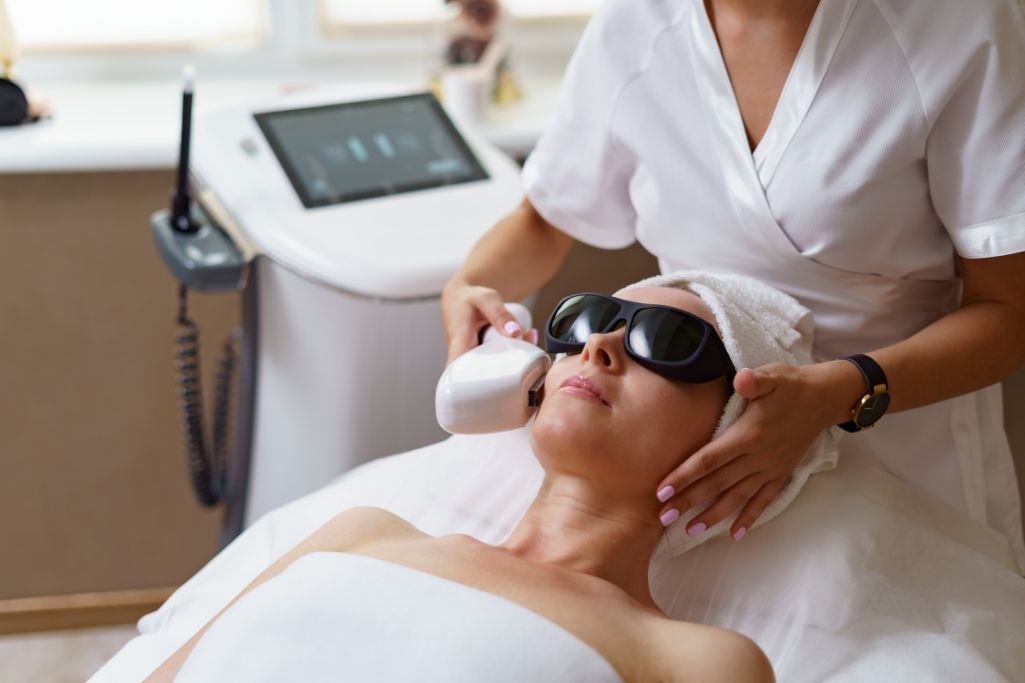Laser hair removal is a common cosmetic procedure that uses laser technology to remove unwanted hair from various areas of the body. Unlike traditional hair removal treatments such as waxing and shaving, laser hair removal yields long-term results and eliminates the need for ongoing maintenance. This blog post will give you the most comprehensive guide about laser hair removal. Dermaconsult Clinic offers the Best Skin Laser Treatment in Aurangabad.
What is laser hair removal?
A focused light beam is used in laser hair removal to target the hair follicles. Heat is produced when light is absorbed by the pigment in the hair. The hair follicle is subsequently damaged by this heat, inhibiting further hair development. The procedure’s laser is engineered to specifically target the hair follicle, sparing the surrounding skin from damage.
A certain wavelength of light that may pass through the skin and reach the hair follicle is emitted by the laser used to remove hair. The light is absorbed by the melanin in the hair follicle and transformed into heat, which kills the hair follicle. Every hair follicle in the treated area goes through the same procedure again.
People with light skin and dark hair have the best results with laser hair removal because the contrast between the skin and hair makes it easier for the laser to target the hair follicle. Though some may need more sessions to attain the desired results, advances in laser technology have made it possible to treat a variety of skin tones.
Benefits Of Laser Hair Removal
1. Long-lasting effects: In contrast to other transient hair removal techniques, laser hair removal has the potential to produce long-lasting effects. Individuals may see an 85–90% loss of hair after a course of treatments.
2. Precision: Laser hair removal can precisely target and eliminate unwanted hair from particular body parts without causing damage to the surrounding skin. This makes it a precise and efficient way to get rid of hair.
3. Speed: As a rapid and effective hair removal technique, hair removal may treat many hair follicles at once. The length of treatment depends on the part of the body being treated, but most sessions are manageable and may be finished over a lunch break.
4. Convenience: Over time, this approach may result in time and cost savings.
5. Better skin quality: Frequent waxing and shaving can irritate the skin, leading to problems like ingrown hair and redness. Because hair removal stimulates the synthesis of collagen, it can improve the overall condition of the skin.
6. No Razor Rash: Shaving, which can result in razor rash, ingrown hairs, and other skin irritations, is not necessary with hair removal.
What To Expect During A Laser Hair Removal Treatment?
1. Consultation: To discuss your medical history, skin type, and hair removal objectives, you will have a consultation with your practitioner before your treatment. Your practitioner will schedule a patch test once your consultation is satisfactory to ascertain the proper laser settings for your skin and hair type. To be sure you don’t have any negative side effects, you should wait five to seven days after the patch test. We can begin your first session if you don’t react.
2. Laser therapy: Your doctor will target the hair follicles with portable laser equipment during the operation. The focused light beam that the laser produces damages the hair follicle’s pigment and stops it from growing new hair.
3. Sensations: During the procedure, you can experience a cracking or tingling feeling. To minimize discomfort, your practitioner may change the laser settings based on your pain threshold. A cryocooling machine may be used in some locations to rapidly soothe your skin and lessen the discomfort of the treatment.
4. Treatment duration: The size of the treatment area will determine how long the treatment takes. Larger areas, like the back or legs, can take up to an hour, while smaller parts, like the upper lip or underarms, might just take a few minutes.
5. Post-treatment: To lessen swelling and redness, your technician will cool the treated region after the procedure. Though it should pass in a few hours, you might feel some slight annoyance or discomfort.
6. Succession therapies: For optimal results, hair removal usually necessitates several sessions. Based on the timing of your hair growth cycle, your practitioner will suggest a course of therapy that should be administered every 4 to 8 weeks.
How Many Laser Hair Removal Sessions Will You Need?
The treatment area, your hair growth cycle, your skin type, and other factors will all affect how many laser hair removal sessions you require. For most patients to see noticeable improvements, a minimum of 6–9 treatments are needed. Nevertheless, based on their unique circumstances, some individuals could need additional therapies.
To create a customized treatment plan, your practitioner will examine the treatment region, your skin and hair type, and your goals for hair removal during your consultation. Since hair removal only works on hair that is in the active growth phase, many treatments are required to target hair at various development cycle stages.
To give the hair enough time to enter the active growth phase, laser hair removal sessions are usually administered 4–8 weeks apart. The individual’s hormone levels, and the thickness and density of their hair might also affect how many sessions are needed.
It could be suggested to attend maintenance sessions to keep the outcomes after the initial course of therapy is finished. Laser hair removal can result in enhanced skin texture and long-lasting hair reduction when used properly.
Conclusion:
One safe and efficient method for getting rid of unwanted hair from various body regions is laser hair removal. It removes the need for ongoing upkeep and produces effects that last. For laser hair removal, schedule an appointment with Dr. Waseemuddin Shaikh, the Best Dermatologist In Aurangabad now!
Read more about RICH PLASMA THERAPY WORKS FOR HAIR GROWTH


